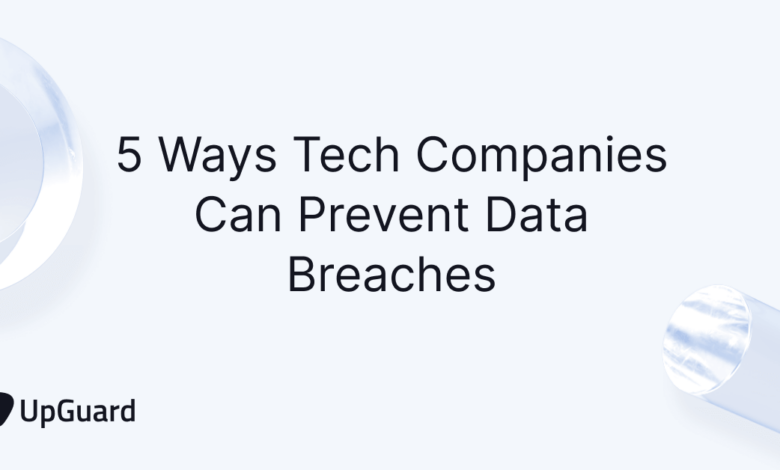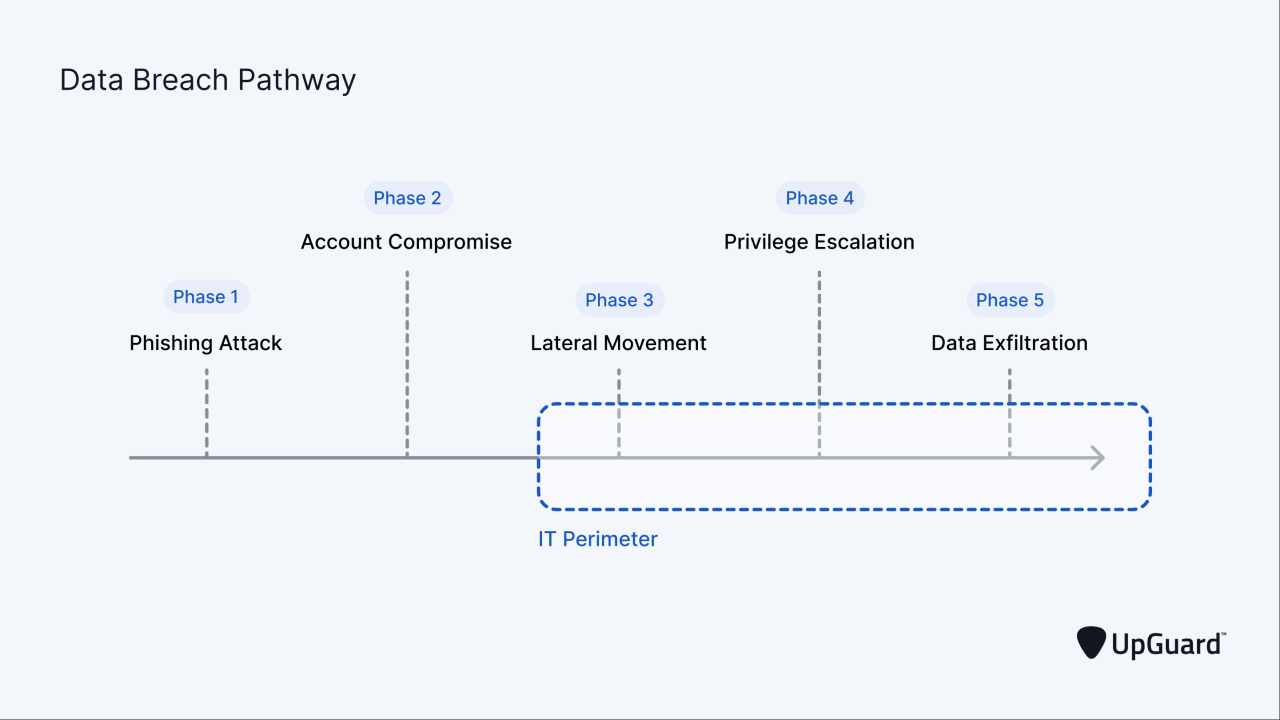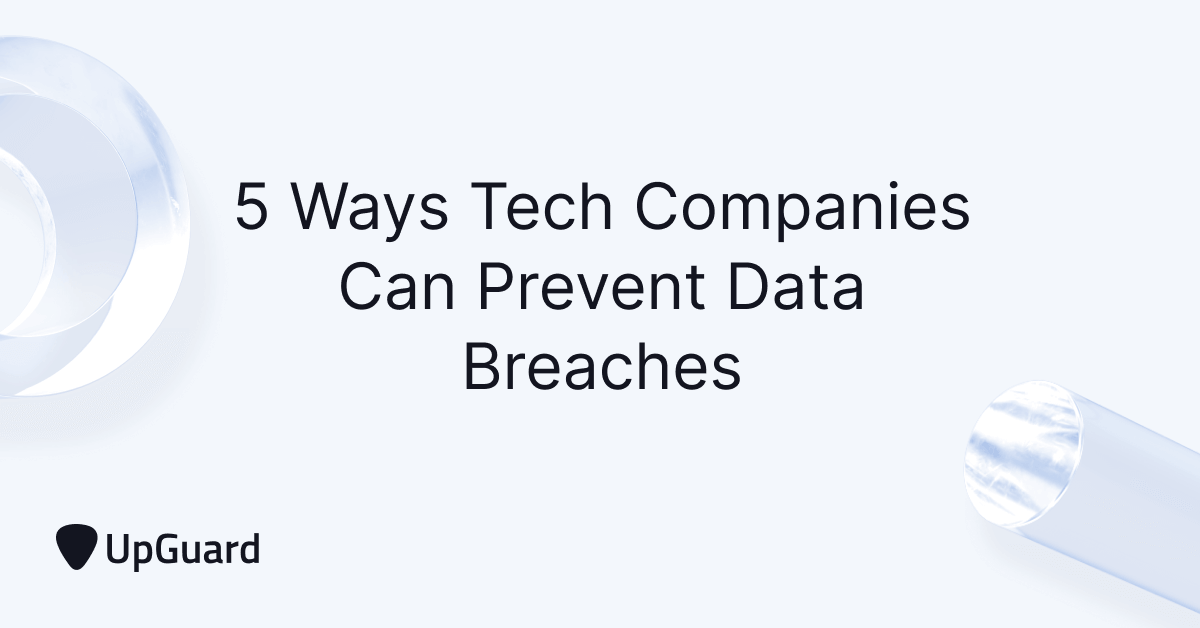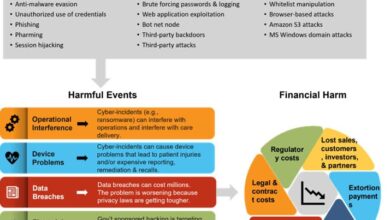
9 Ways to Prevent Third Party Data Breaches
9 Ways to Prevent Third Party Data Breaches – that’s the question on every business owner’s mind these days, right? Data breaches are a nightmare scenario, costing companies millions and severely damaging reputations. But it doesn’t have to be that way. This post dives into nine practical strategies to fortify your defenses against third-party data breaches, giving you the power to protect your valuable information and your peace of mind.
We’ll explore everything from strong password policies to robust incident response plans, offering actionable steps you can take today.
We’ll be looking at practical, real-world solutions you can implement immediately. Forget the overly technical jargon; we’ll keep it clear and concise, focusing on the strategies that make the biggest difference. Whether you’re a seasoned cybersecurity professional or just starting to think about data security, this guide will equip you with the knowledge you need to protect your business.
Strong Password Policies and Multi-Factor Authentication
Protecting your data from unauthorized access is paramount in today’s digital landscape. A robust security strategy needs to go beyond simple passwords; it requires a multi-layered approach incorporating strong password policies and multi-factor authentication (MFA). These two elements, when implemented correctly, significantly reduce the risk of third-party data breaches.Strong password policies are the foundation of a secure system.
They dictate the criteria passwords must meet, making them more difficult for attackers to guess or crack. Multi-factor authentication adds an extra layer of security, requiring users to provide multiple forms of verification before gaining access. Together, these measures create a significantly more resilient defense against unauthorized access.
Password Policy Requirements
A well-defined password policy is crucial. It should specify minimum length, complexity requirements (including uppercase and lowercase letters, numbers, and symbols), and a mandatory regular password change schedule. For example, a strong policy might require passwords to be at least 12 characters long, contain at least one uppercase letter, one lowercase letter, one number, and one special character, and be changed every 90 days.
Enforcing such a policy makes brute-force attacks exponentially more difficult. Regular password changes prevent attackers from using stolen credentials for extended periods. Consider rotating passwords for critical accounts more frequently (e.g., every 30 days).
Multi-Factor Authentication Methods
Multi-factor authentication (MFA) adds a second or third layer of security beyond just a password. This means that even if an attacker obtains a user’s password, they will still need additional verification to access the account. Several MFA methods exist, each with its own strengths and weaknesses.
- Time-Based One-Time Passwords (TOTP): These are generated by an authenticator app (like Google Authenticator or Authy) and change every 30 seconds. They offer a good balance of security and convenience. Weakness: Requires a smartphone or other device with the authenticator app installed.
- SMS-Based OTP: A one-time password is sent via text message to a registered phone number. Simple and widely available. Weakness: Vulnerable to SIM swapping attacks, where attackers gain control of the user’s phone number.
- Hardware Security Keys: These physical devices plug into a computer’s USB port or connect via NFC. They offer a very high level of security. Weakness: Requires the user to carry the physical key.
- Biometrics: Using fingerprints, facial recognition, or other biometric data for authentication. Convenient and user-friendly. Weakness: Vulnerable to spoofing attacks, especially if the biometric system is not properly secured.
The best MFA method often depends on the specific context and risk tolerance. A layered approach, combining multiple methods, offers the strongest protection.
Sample Security Policy
This sample policy Artikels password and MFA requirements:
Password Policy: Passwords must be at least 12 characters long, contain at least one uppercase letter, one lowercase letter, one number, and one special character. Passwords must be changed every 90 days. Re-use of previous passwords is prohibited.
Multi-Factor Authentication: All users are required to enable multi-factor authentication using at least one of the following methods: Time-Based One-Time Password (TOTP) application, Hardware Security Key, or Biometric Authentication (where available).
Implementing these policies and regularly reviewing and updating them based on emerging threats is crucial for maintaining a robust security posture. Consistent enforcement and user education are key to their effectiveness.
Vendor Risk Management
Third-party vendors are an integral part of most modern businesses, providing essential services and access to crucial resources. However, this reliance introduces significant security risks. A robust vendor risk management program is crucial for mitigating the potential for data breaches originating from these external partners. Failing to properly manage vendor risk can expose your organization to significant financial losses, reputational damage, and legal repercussions.Effective vendor risk management involves a multi-faceted approach encompassing careful selection, ongoing monitoring, and strong contractual obligations.
This ensures that your vendors maintain appropriate security standards and are prepared to respond effectively in the event of a security incident.
Identifying Key Risks Associated with Third-Party Vendors
Understanding the potential risks associated with third-party vendors is the first step towards effective mitigation. These risks can range from simple negligence to malicious intent. Key risks include unauthorized access to sensitive data due to weak security controls within the vendor’s infrastructure, inadequate data encryption during transmission or storage, insufficient employee background checks, and lack of incident response planning.
The specific risks will vary depending on the type of vendor and the sensitivity of the data they access. For example, a vendor managing customer payment information faces different risks than a vendor providing marketing services. A thorough risk assessment should be conducted for each vendor, considering the specific services provided and the data involved.
Best Practices for Selecting and Vetting Reliable Third-Party Vendors
Selecting and vetting reliable third-party vendors requires a rigorous process. This should begin with clearly defining your security requirements and expectations. Then, a thorough due diligence process should be undertaken, including reviewing the vendor’s security certifications (e.g., ISO 27001), conducting background checks on key personnel, and requesting evidence of their security controls. Requesting references and conducting site visits can also provide valuable insights into the vendor’s security posture.
A structured questionnaire focusing on their security practices, incident response plans, and data protection policies is essential. Prioritizing vendors with a proven track record of security compliance and a commitment to data protection is vital.
The Importance of Contractual Agreements Addressing Data Security and Breach Response
Contractual agreements serve as the cornerstone of vendor risk management. These agreements should clearly Artikel the vendor’s responsibilities regarding data security, including data encryption, access controls, incident reporting, and breach notification procedures. The contract should specify the vendor’s obligations in the event of a data breach, including their commitment to remediation and financial responsibility. Including clauses on data ownership, data retention policies, and audit rights ensures ongoing oversight and accountability.
Failure to establish clear contractual obligations leaves your organization vulnerable to significant legal and financial liabilities in case of a breach.
Checklist for Assessing the Security Posture of Potential Third-Party Vendors
A comprehensive checklist is crucial for consistently assessing the security posture of potential third-party vendors. This checklist should cover areas such as:
- Security certifications and accreditations (e.g., ISO 27001, SOC 2)
- Physical security measures (e.g., access controls, surveillance)
- Network security controls (e.g., firewalls, intrusion detection systems)
- Data encryption methods (both in transit and at rest)
- Data loss prevention (DLP) measures
- Incident response plan and procedures
- Employee background checks and security awareness training
- Regular security audits and penetration testing
- Data backup and recovery procedures
This checklist provides a framework for a structured assessment, ensuring consistent evaluation of potential vendors and mitigating the risk of choosing insecure partners. Regularly reviewing and updating this checklist is important to stay current with evolving security threats and best practices.
Employee Training and Awareness

Your employees are your first line of defense against data breaches. A well-trained workforce understands the risks and knows how to avoid common pitfalls. Neglecting employee training is like leaving your front door unlocked – it’s an open invitation for trouble. Investing in comprehensive security awareness training is crucial for building a robust security posture.Effective employee training programs are more than just a box-ticking exercise; they are a continuous process of education and reinforcement.
A single training session is insufficient to create lasting behavioral changes. Regular updates and engaging methods are key to keeping employees informed and alert to the ever-evolving threat landscape.
Effective Employee Training Programs
Effective training combines various learning methods to cater to different learning styles. For example, interactive modules with quizzes and scenarios can be more engaging than lengthy presentations. Real-world examples of data breaches and their consequences can be a powerful motivator for employees to take security seriously. Including case studies of organizations that suffered significant losses due to employee negligence can underscore the importance of following security protocols.
A well-structured program might incorporate short videos explaining security concepts, interactive exercises testing knowledge, and simulated phishing attacks to gauge employee response.
The Importance of Regular Security Awareness Training and Phishing Simulations
Regular training keeps security top-of-mind. It’s not enough to train employees once and forget about it. The threat landscape is constantly changing, with new attack vectors emerging regularly. Regular refresher courses, coupled with simulated phishing attacks, help employees stay vigilant and improve their ability to identify and report suspicious activity. Phishing simulations provide valuable real-world experience, allowing employees to practice identifying malicious emails and links without risking actual data compromise.
Analyzing the results of these simulations helps identify areas where additional training is needed. For instance, if a significant portion of employees falls for a particular type of phishing scam, targeted training on that specific type of attack can be implemented.
Motivating Employees to Adopt Secure Practices
Gamification, rewards, and recognition can significantly improve employee engagement and motivation. A points-based system for completing training modules and successfully identifying phishing attempts can encourage participation and reinforce positive behaviors. Public acknowledgment of employees who consistently demonstrate good security practices can also be a powerful motivator. Furthermore, emphasizing the importance of security in protecting the company’s reputation and the personal data of customers can foster a sense of shared responsibility.
Clear communication about the potential consequences of security breaches, both for the company and individual employees, can also strengthen the message.
Sample Training Module: Key Data Security Concepts and Procedures
This module Artikels key concepts and procedures. The module begins with an introduction to data security threats, followed by sections on password security, phishing awareness, social engineering tactics, and data handling procedures. Each section includes interactive elements, such as quizzes and scenarios, to reinforce learning. A final section covers reporting procedures for suspicious activity. The module concludes with a comprehensive test to assess employee understanding and retention of the material.
A post-training survey can collect feedback and identify areas for improvement. For example, a section on password security might include a quiz on strong password creation and best practices for password management. The phishing awareness section would cover different types of phishing attacks, such as spear phishing and whaling, and provide practical tips for identifying suspicious emails.
The section on social engineering would cover various techniques used by attackers to manipulate individuals into revealing sensitive information. The data handling section would cover procedures for handling sensitive data, including access control, data encryption, and data disposal.
Data Encryption and Access Control
Protecting your data from unauthorized access is paramount in preventing third-party breaches. A robust security strategy needs to encompass both strong encryption and finely-tuned access control mechanisms. This dual approach ensures that even if a breach occurs, the sensitive data remains unintelligible to malicious actors and only authorized personnel can access it.
Data Encryption: In Transit and At Rest
Data encryption is the process of transforming readable data (plaintext) into an unreadable format (ciphertext) using a cryptographic key. This ensures confidentiality, protecting data from unauthorized access regardless of where it resides. Encryption “in transit” protects data while it’s being transmitted over a network, for example, during online transactions or data transfers between servers. Encryption “at rest” protects data stored on servers, hard drives, or other storage devices.
Both are crucial for comprehensive security. For instance, HTTPS encrypts data during online transactions, while disk encryption protects data stored on a laptop.
Implementing Robust Access Control Measures
Robust access control ensures that only authorized individuals can access specific data and perform certain actions. Role-Based Access Control (RBAC) is a widely used model. RBAC assigns users roles based on their job functions, granting them access only to the data and functionalities relevant to their roles. For example, an accountant might have access to financial data but not to customer personal information, while a customer service representative might have access to customer information but not to financial records.
This granular control minimizes the risk of data breaches by limiting access to the minimum necessary level. Beyond RBAC, other access control mechanisms include attribute-based access control (ABAC) and mandatory access control (MAC).
Comparison of Encryption Methods
Different encryption methods offer varying levels of security and performance. The choice depends on the sensitivity of the data and the computational resources available. Symmetric encryption uses the same key for encryption and decryption, offering faster speeds but requiring secure key exchange. Asymmetric encryption uses separate keys for encryption and decryption (public and private keys), offering better key management but slower speeds.
Hashing functions generate a one-way cryptographic hash, used for data integrity verification rather than encryption.
Encryption Methods: Strengths and Weaknesses
| Encryption Method | Strengths | Weaknesses | Suitable For |
|---|---|---|---|
| AES (Advanced Encryption Standard) | Widely adopted, fast, strong security | Key management crucial | Data at rest and in transit |
| RSA (Rivest-Shamir-Adleman) | Strong security, suitable for key exchange | Slower than symmetric encryption | Digital signatures, key exchange |
| SHA-256 (Secure Hash Algorithm 256-bit) | Excellent for data integrity verification | Not reversible, cannot be used for encryption | Password hashing, data integrity checks |
| ECC (Elliptic Curve Cryptography) | Strong security with smaller key sizes | Can be more complex to implement | Mobile devices, embedded systems |
Regular Security Audits and Penetration Testing
Regular security audits and penetration testing are crucial proactive measures to identify vulnerabilities in your systems before malicious actors can exploit them. They provide a comprehensive assessment of your security posture, allowing you to strengthen defenses and minimize the risk of a third-party data breach. Ignoring these essential practices leaves your organization exposed to significant financial and reputational damage.Security audits and penetration testing, while related, serve distinct purposes.
Audits focus on evaluating compliance with security policies and standards, while penetration testing simulates real-world attacks to identify exploitable weaknesses. A robust security program incorporates both.
Types of Security Audits
Security audits can take many forms, each addressing specific aspects of your security infrastructure. For instance, a vulnerability assessment scans systems for known weaknesses, while a compliance audit verifies adherence to regulations like HIPAA or PCI DSS. A risk assessment analyzes the likelihood and impact of potential threats, helping prioritize mitigation efforts. Finally, a code review examines the source code of applications for security flaws.
Each audit type offers valuable insights, contributing to a more complete understanding of your security landscape.
Penetration Testing Methodologies, 9 ways to prevent third party data breaches
Penetration testing methodologies vary in scope and approach. Black box testing simulates an external attacker with no prior knowledge of the system, while white box testing provides the tester with complete system information. Grey box testing falls between these two extremes, providing the tester with limited information. Each approach offers unique advantages, and a combination of methods is often employed for a comprehensive assessment.
For example, a company might use black box testing to simulate a phishing attack, while white box testing is used to assess the security of internal systems.
Benefits of Engaging External Security Experts
While internal teams can conduct some security assessments, engaging external security experts offers several key advantages. External experts bring an unbiased perspective, identifying vulnerabilities that internal teams might overlook due to familiarity with the systems. They possess specialized knowledge and experience in various attack vectors and methodologies, often utilizing advanced tools and techniques not readily available internally. Furthermore, using an external firm provides an independent verification of your security posture, which can be valuable for compliance audits and insurance purposes.
Schedule for Regular Security Audits and Penetration Tests
Establishing a regular schedule for security audits and penetration tests is vital. The frequency depends on your organization’s risk profile and industry regulations. However, a good starting point might be annual penetration testing, complemented by more frequent vulnerability assessments (e.g., quarterly). Compliance audits should be conducted according to regulatory requirements. For instance, a company handling sensitive financial data might require more frequent PCI DSS compliance audits.
Regular internal security audits can be integrated into the overall schedule to monitor ongoing security practices. This planned, proactive approach ensures consistent monitoring and improvement of your security posture.
Data Loss Prevention (DLP) Measures
Data loss prevention (DLP) is a critical component of a robust cybersecurity strategy. It’s about proactively identifying, monitoring, and protecting sensitive data wherever it resides – whether on laptops, servers, in the cloud, or even on mobile devices. A comprehensive DLP strategy significantly reduces the risk of data breaches caused by accidental or malicious actions. Implementing effective DLP measures ensures that your organization maintains control over its valuable information assets.DLP tools and techniques play a crucial role in preventing data breaches by actively monitoring and controlling data movement.
They act as a safeguard against both internal and external threats, ensuring that sensitive information doesn’t fall into the wrong hands. This proactive approach is far more effective than simply reacting to a breach after it’s occurred.
Key Data Loss Prevention Tools and Technologies
Several tools and technologies are available to implement DLP. These range from network-based solutions that monitor traffic for sensitive data patterns to endpoint solutions that scan individual devices for unauthorized data transfers. Cloud-based DLP solutions also provide protection for data stored in cloud services. Examples include enterprise-grade DLP platforms from vendors like Forcepoint, McAfee, and Symantec, which offer a comprehensive suite of features such as data discovery, classification, monitoring, and prevention.
Many Security Information and Event Management (SIEM) systems also incorporate DLP capabilities.
Data Masking and Encryption Techniques
Data masking involves replacing sensitive data elements with non-sensitive substitutes while preserving the original data structure. This is commonly used for testing and development purposes, preventing the exposure of real customer data in non-production environments. For example, a credit card number might be replaced with a series of Xs, while retaining the same length and format. Encryption, on the other hand, transforms data into an unreadable format, rendering it inaccessible without the appropriate decryption key.
This protects data both in transit (e.g., using HTTPS) and at rest (e.g., encrypting databases). Strong encryption algorithms, such as AES-256, are crucial for effective data protection.
The Role of DLP in Preventing Data Breaches
DLP plays a vital role in preventing data breaches by acting as a multi-layered defense mechanism. It identifies sensitive data, monitors its movement, and prevents unauthorized access or exfiltration. This proactive approach reduces the impact of both insider threats (malicious or accidental data leaks by employees) and external attacks (e.g., phishing, malware). By implementing robust DLP measures, organizations can significantly reduce their attack surface and minimize the likelihood of a successful data breach.
For example, DLP can prevent sensitive documents from being emailed to unauthorized recipients or uploaded to unapproved cloud storage services.
Best Practices for Implementing DLP Measures
Implementing effective DLP requires a strategic approach. Before deploying any DLP tools, a thorough data discovery and classification process is essential. This involves identifying all sensitive data assets within the organization and classifying them according to their sensitivity level.
- Data Discovery and Classification: A crucial first step is to identify and classify all sensitive data. This includes personally identifiable information (PII), financial data, intellectual property, and other confidential information.
- Policy Definition and Enforcement: Clear data handling policies must be defined and enforced. These policies should Artikel acceptable uses of data, data storage guidelines, and access controls.
- Regular Monitoring and Auditing: Continuous monitoring and regular audits are necessary to ensure that DLP measures are effective and that policies are being adhered to.
- Employee Training and Awareness: Educating employees about data security risks and DLP policies is crucial to prevent accidental data breaches.
- Integration with Other Security Measures: DLP should be integrated with other security measures, such as access control, intrusion detection, and incident response systems.
Incident Response Plan

A robust incident response plan is crucial for minimizing the damage caused by a data breach. It’s not a matter of
- if* a breach will occur, but
- when*, and having a well-defined plan in place significantly reduces the impact and accelerates recovery. This plan should be regularly tested and updated to reflect changes in your organization’s systems and security landscape.
A comprehensive incident response plan Artikels the steps to take in the event of a security incident, including data breaches. It details roles and responsibilities, communication protocols, and procedures for containment, eradication, recovery, and post-incident activity. The plan’s effectiveness hinges on its clarity, practicality, and the regular training of personnel involved.
Key Components of an Incident Response Plan
A strong incident response plan includes several key components. These components work together to ensure a coordinated and effective response to security incidents. The plan should clearly define roles, responsibilities, and escalation paths for all involved parties. It should also Artikel the process for identifying, containing, eradicating, and recovering from a security incident, as well as procedures for post-incident activity, including lessons learned and improvements to security posture.
Identifying, Containing, and Resolving a Data Breach
The process of handling a data breach involves several distinct phases. First, the breach must be identified, often through monitoring systems or user reports. Containment involves isolating affected systems to prevent further damage or data exfiltration. Eradication focuses on removing the threat and restoring system integrity. Finally, the system is recovered to its operational state, and preventative measures are implemented to reduce the likelihood of future breaches.
For example, if a phishing attack exposes credentials, the response would involve isolating affected accounts, changing passwords, investigating the scope of the breach, and implementing stronger security awareness training.
So, I’ve been researching the 9 ways to prevent third party data breaches, and it’s fascinating how much hinges on secure application development. This got me thinking about efficient, secure development processes, which led me to check out domino app dev the low code and pro code future – it seems like a promising approach to building robust apps.
Ultimately, strong app security is a critical piece of the puzzle when it comes to preventing those 9 data breach scenarios.
Communication Protocols for Stakeholders During a Breach
Effective communication is vital during a data breach. A pre-defined communication plan Artikels who needs to be informed, when, and how. This includes internal stakeholders (employees, management, legal counsel) and external stakeholders (customers, regulators, law enforcement). Communication should be timely, transparent, and consistent, using pre-approved messaging to avoid confusion or misinformation. For example, a pre-written press release template, tailored to various breach scenarios, can expedite the process of informing the public.
Documenting and Reporting a Security Incident
Thorough documentation is essential for both internal review and potential legal or regulatory investigations. This includes detailed logs of all actions taken, timelines of events, affected systems, and data involved. The documentation should be objective and factual, providing a clear and concise account of the incident. Reporting procedures vary depending on the severity of the breach and applicable regulations.
For instance, many jurisdictions mandate reporting data breaches to regulatory bodies within a specific timeframe. Maintaining a comprehensive audit trail of all actions taken during and after the breach is crucial for demonstrating compliance and improving future responses.
Secure Network Infrastructure
A robust and secure network infrastructure is the bedrock of any organization’s data protection strategy. It acts as the first line of defense against external threats and internal vulnerabilities, preventing unauthorized access and data breaches. A well-designed and implemented network security architecture significantly reduces the risk of compromise, safeguarding sensitive information and maintaining business continuity.A secure network infrastructure goes beyond simply connecting devices; it involves a multi-layered approach encompassing hardware, software, and policies to control access and monitor activity.
This holistic approach minimizes the attack surface and ensures that even if one layer is compromised, others remain intact to mitigate the damage. Ignoring network security is akin to leaving the front door unlocked – inviting trouble.
Firewall Configuration
Firewalls are essential for controlling network traffic, acting as gatekeepers that filter incoming and outgoing data based on predefined rules. Effective firewall configuration involves defining strict rules that only allow necessary traffic, blocking all others. This includes blocking common attack vectors like port scanning and denial-of-service attempts. Regular updates are crucial to address newly discovered vulnerabilities and maintain optimal protection.
Furthermore, implementing deep packet inspection (DPI) capabilities allows firewalls to examine the contents of network packets, enhancing their ability to detect and block malicious traffic, even if it is disguised.
Intrusion Detection/Prevention Systems (IDS/IPS)
IDS/IPS systems monitor network traffic for suspicious activity, identifying potential threats and taking action to prevent or mitigate them. IDS systems passively monitor network traffic, alerting administrators to potential security breaches, while IPS systems actively block malicious traffic. Effective implementation requires careful configuration to minimize false positives while ensuring detection of actual threats. Regular tuning and updates are vital to maintain effectiveness against evolving attack techniques.
Proper placement within the network architecture is crucial for optimal performance. For example, placing an IPS close to the firewall provides a second layer of protection against attacks that might bypass the firewall’s initial filtering.
Virtual Private Networks (VPNs)
VPNs create secure connections over public networks, encrypting data transmitted between devices and protecting it from eavesdropping. This is particularly crucial for remote workers accessing company resources. A strong VPN implementation utilizes robust encryption protocols, such as AES-256, and strong authentication mechanisms, like multi-factor authentication, to ensure only authorized users can access the network. Regular audits of VPN configurations are necessary to ensure the continued integrity and security of the connections.
Failure to properly configure and maintain VPNs leaves sensitive data vulnerable to interception during transmission.
Network Segmentation
Network segmentation divides a network into smaller, isolated segments, limiting the impact of a breach. If one segment is compromised, the attacker’s access is restricted to that segment, preventing widespread damage. This is achieved through the use of routers, firewalls, and VLANs (Virtual LANs). A well-segmented network isolates critical systems and data from less sensitive areas, minimizing the potential for lateral movement by attackers.
For instance, separating the guest Wi-Fi network from the internal corporate network prevents unauthorized access to sensitive internal systems.
Essential Network Security Controls
Implementing a comprehensive set of network security controls is paramount. This includes:
- Regular security patching and updates for all network devices.
- Strong access control mechanisms, including role-based access control (RBAC).
- Regular vulnerability scanning and penetration testing to identify weaknesses.
- Centralized log management for monitoring and analysis of network activity.
- Network traffic monitoring and analysis to detect anomalies.
- Security awareness training for network administrators and users.
- Regular backups and disaster recovery planning.
A proactive approach to network security, encompassing all these controls, significantly reduces the risk of successful attacks and data breaches.
Regular Software Updates and Patching: 9 Ways To Prevent Third Party Data Breaches
Keeping your software up-to-date is a cornerstone of a robust cybersecurity strategy. Outdated software is a gaping hole in your defenses, leaving your systems vulnerable to a wide array of attacks. Regular patching prevents malicious actors from exploiting known vulnerabilities, minimizing your risk of a costly data breach.Regular software updates deliver critical security patches that address known vulnerabilities, preventing attackers from exploiting weaknesses in your systems.
These vulnerabilities can range from minor inconveniences to catastrophic breaches, leading to data loss, financial damage, and reputational harm. Ignoring updates exposes your organization to significant risks.
Vulnerabilities Exploited Through Outdated Software
Outdated software often contains known security flaws that cybercriminals actively exploit. For example, the infamous Heartbleed vulnerability (CVE-2014-0160) in OpenSSL, a widely used cryptography library, allowed attackers to steal sensitive data, including passwords and private keys, from affected servers. Similarly, the EternalBlue exploit (part of the Shadow Brokers leak) targeted a vulnerability in older versions of Microsoft Windows, enabling widespread ransomware attacks like WannaCry.
These examples highlight the severe consequences of neglecting software updates. Failure to patch these vulnerabilities can lead to significant data breaches and financial losses.
Implementing a Software Patching Strategy
A well-defined software patching strategy is crucial for effective vulnerability management. This strategy should encompass several key aspects. First, a comprehensive inventory of all software across your organization is essential. This includes operating systems, applications, and firmware. Next, a clear process for identifying and prioritizing updates is needed, focusing on critical security patches first.
Regular scanning for vulnerabilities using automated tools is recommended. Finally, a rigorous testing procedure should be in place before deploying patches to production environments to minimize disruption and unexpected issues. This process helps ensure that updates are deployed smoothly and effectively, minimizing any potential impact on operations.
Software Update Management Approaches
Different approaches exist for managing software updates, each with its own strengths and weaknesses. The choice depends on factors like organizational size, technical expertise, and risk tolerance.
| Approach | Description | Advantages | Disadvantages |
|---|---|---|---|
| Manual Patching | Updates are applied manually by IT staff. | High control, suitable for small environments. | Time-consuming, prone to errors, difficult to scale. |
| Automated Patch Management | Software automatically scans for and applies updates. | Efficient, reduces human error, scalable. | Requires initial investment in software and expertise. |
| Third-Party Patch Management Services | Outsourcing update management to a specialized vendor. | Expertise, reduced workload for internal IT, often cost-effective. | Dependence on external provider, potential security risks if the provider is compromised. |
| Hybrid Approach | Combines manual and automated patching. | Balances control and efficiency, allows for customization. | Requires careful planning and coordination. |
Last Point
Securing your data from third-party risks isn’t a one-time fix; it’s an ongoing process. By consistently implementing these nine strategies – from strong password policies and rigorous vendor vetting to regular security audits and comprehensive incident response plans – you’ll significantly reduce your vulnerability to data breaches. Remember, proactive security is always cheaper and less stressful than reactive damage control.
So take control, implement these steps, and sleep soundly knowing your data is better protected.
Expert Answers
What if a vendor refuses to comply with our security requirements?
Don’t hesitate to walk away. The risk associated with a non-compliant vendor far outweighs the potential benefits of their services. Find a vendor who prioritizes security as much as you do.
How often should we conduct security awareness training?
Aim for at least annual training, supplemented by regular phishing simulations (quarterly or even monthly) to keep employees vigilant.
What’s the best way to choose an external security auditor?
Look for experience, certifications (like ISO 27001), and a proven track record of success. Check references and ask for case studies.
How do I know if my data encryption is strong enough?
Consult with a cybersecurity professional to assess your encryption methods and ensure they align with industry best practices and the sensitivity of your data.





